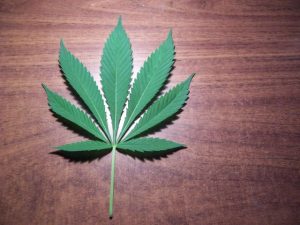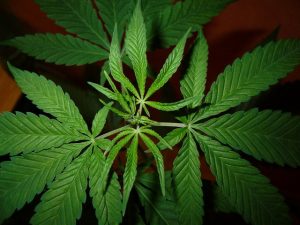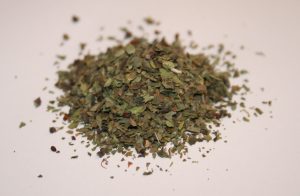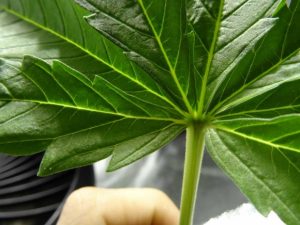Technology is playing a big part in reclaiming the lives of California residents who were adversely affected by past  cannabis convictions. In San Francisco, for example, Code for America is assisting the District Attorney’s office in identifying people eligible to have their marijuana arrest records cleared, according to a report by Fast Company. The organization created an algorithm that could scan old case files for qualifying criteria. The system then takes it a step further by filling out the necessary paperwork, as well.
cannabis convictions. In San Francisco, for example, Code for America is assisting the District Attorney’s office in identifying people eligible to have their marijuana arrest records cleared, according to a report by Fast Company. The organization created an algorithm that could scan old case files for qualifying criteria. The system then takes it a step further by filling out the necessary paperwork, as well.
This is a huge victory for communities hit hardest by the politically motivated and often misguided “War on Drugs.” Minority communities and neighborhoods have historically been targeted the hardest when it came to convicting for marijuana use, while similar crimes in predominantly white communities were largely ignored. This has left a trail of destruction for predominantly black areas, with families broken apart by loved ones serving jail time and futures being damaged. It is more difficult for those with convictions on their records to find good work and obtain housing, meaning that even once people have fulfilled their punishment, they can be haunted by their records years later. Continue reading
 Cannabis Law Group's Medical Marijuana Legal Blog
Cannabis Law Group's Medical Marijuana Legal Blog





 cannabis. Oregon in particular is reporting an excess in cannabis production, which is driving down the price of marijuana at dispensaries across the state, according to
cannabis. Oregon in particular is reporting an excess in cannabis production, which is driving down the price of marijuana at dispensaries across the state, according to  down, largely due to a scare campaign that positioned the 10 pre-designated cultivators as a monopoly. In 2016,
down, largely due to a scare campaign that positioned the 10 pre-designated cultivators as a monopoly. In 2016,  in common with the natural drug as a circle to a square. Lawmakers have long been chasing down these dangerous substances, to no avail. But the Illinois State Senate is taking steps to close loopholes that manufacturers have been manipulating once and for all, according to
in common with the natural drug as a circle to a square. Lawmakers have long been chasing down these dangerous substances, to no avail. But the Illinois State Senate is taking steps to close loopholes that manufacturers have been manipulating once and for all, according to  cannabis-related activity is still banned: No recreational sales, no medical sales, no commercial growing, no testing, no distribution, no manufacturing. Residents can grow indoors for personal use or if they are a caretaker, but that’s it.
cannabis-related activity is still banned: No recreational sales, no medical sales, no commercial growing, no testing, no distribution, no manufacturing. Residents can grow indoors for personal use or if they are a caretaker, but that’s it.
 Online media giant YouTube has enacted a host of more stringent enforcement guidelines, seemingly at random, restricting and even shutting down many channels its representatives claim violate its policies. Gun-related channels in particular have come under scrutiny. A bit more perplexing, however, is the site’s more aggressive stance against cannabis-related videos recently, sending warnings, flagging content, and shutting down entire channels, particularly those that seek to educate and advocate. Even after complying with warnings, channel owners said they were suspended. Many of the channels had been around for years, some almost since the beginning of YouTube, according to a
Online media giant YouTube has enacted a host of more stringent enforcement guidelines, seemingly at random, restricting and even shutting down many channels its representatives claim violate its policies. Gun-related channels in particular have come under scrutiny. A bit more perplexing, however, is the site’s more aggressive stance against cannabis-related videos recently, sending warnings, flagging content, and shutting down entire channels, particularly those that seek to educate and advocate. Even after complying with warnings, channel owners said they were suspended. Many of the channels had been around for years, some almost since the beginning of YouTube, according to a  marijuana for research: University of Mississippi. This is in spite of a 2016 decision to allow DEA to approve medical marijuana manufacturers for research purposes and dozens of applications to join the pool, according to a
marijuana for research: University of Mississippi. This is in spite of a 2016 decision to allow DEA to approve medical marijuana manufacturers for research purposes and dozens of applications to join the pool, according to a 
 treatments. University of Utah is planning a $740,000, two-year study on how marijuana affects the brain and why it affects some people differently. UC San Diego, meanwhile, received a cool $4.7 million to research the effects of cannabidiol (CBD) in the treatment of autism. The university said it is the largest private donation for medical cannabis research in U.S. history, according to
treatments. University of Utah is planning a $740,000, two-year study on how marijuana affects the brain and why it affects some people differently. UC San Diego, meanwhile, received a cool $4.7 million to research the effects of cannabidiol (CBD) in the treatment of autism. The university said it is the largest private donation for medical cannabis research in U.S. history, according to